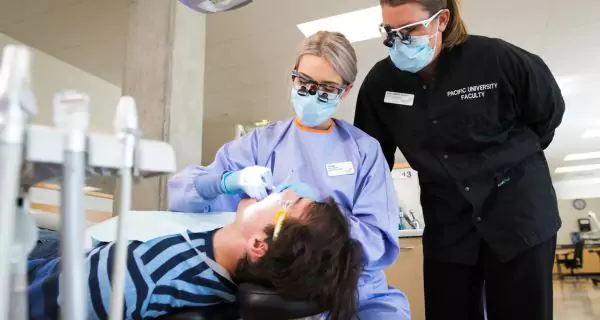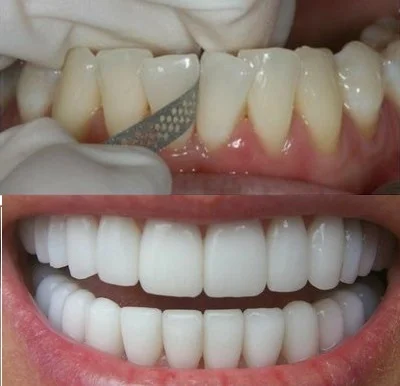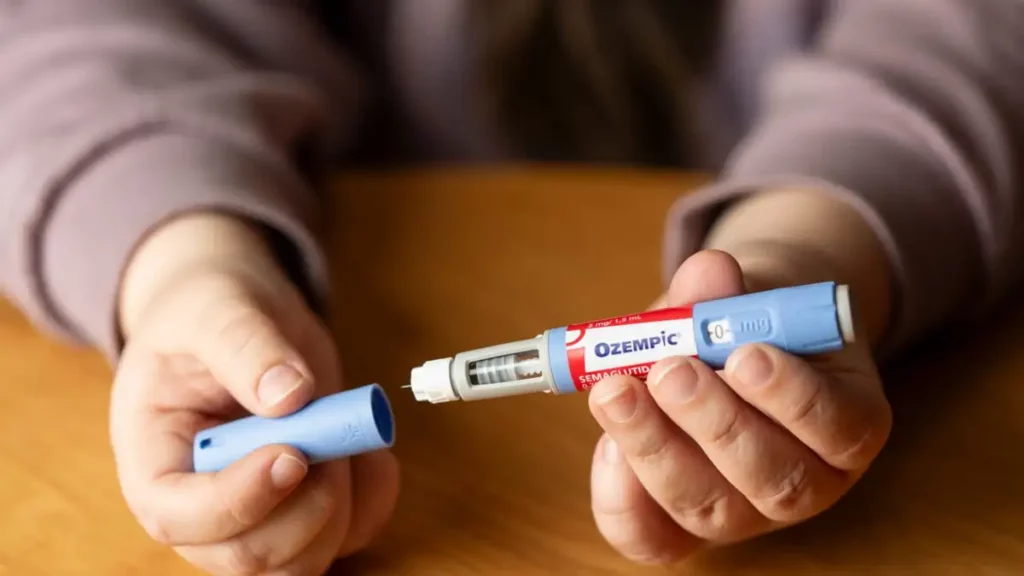Last Updated on: 19th September 2025, 12:52 pm
Teeth shaving, also known as dental sanding, has become a significant trend, especially on TikTok. It involves individuals using abrasive tools like nail files or sandpaper to wear down their teeth in pursuit of a desired aesthetic.
With the pursuit of a more aligned, harmonious, and flawless smile, social media platforms have become inundated with suggestions for at-home techniques to achieve it without consulting a dentist.
However, it is crucial to understand that this DIY approach can result in permanent damage to your teeth. Here’s why professional dental care should be prioritized over teeth shaving at home.
What is Enameloplasty?
The word Enameloplasty refers to procedures performed to change the shape of the tooth by removing a small portion of enamel, the hardest, outer, most translucent layer that covers the tooth.
Ameloplasty must be performed by a dentist, using specialized instruments that guarantee that the shaving is controlled and does not damage the teeth. After removing the necessary portion of enamel, the dentist will smooth and polish the surfaces.
In What Cases Do Dentists File Teeth Shaving?
Ameloplasty is indicated in very specific cases, so the dentist may suggest it after carrying out an adequate study of the situation. Teeth shaving may be required for:
• Smoothing edges: Elimination and correction of sharp points or edges that are hurting the tongue or the inside of the cheek.
• Match the smile: Match the height and edges of the teeth, modifying pointed teeth or unsightly shapes. meloplasty may only be when the shaving required is minimal.
• Correction of dental crowding: If the teeth are too crowded and do not have enough space to accommodate the use of brackets, the orthodontist could choose to perform a very light shaving between the teeth, using strips or discs with abrasive materials.
• Correction of minor bite problems: Ideally, the teeth should fit together when biting: the upper with the lower. When this does not happen, there may be problems with bruxism (dental clenching or grinding), which in turn causes loss of shape of the teeth, headaches, and problems in the joint between the jaw and the skull.
In these cases, the dentist may suggest wearing down small areas that interfere when biting. This is called an occlusal adjustment or selective grinding.
• Partial denture fitting: If some teeth have been lost and a removable partial denture (bridge) is chosen, the shape of the remaining teeth may need to be slightly modified to achieve a good dental fit, including the hooks and supports that help support the prosthesis.
Teeth Shaving Side Effects
Filing your teeth wears away the enamel, the outer layer. While minimal risks exist when done by a dentist, teeth shaving can expose the sensitive dental pulp and cause sensitivity to hot or cold drinks. Improper or repeated filing may contribute to enamel hypoplasia.
In addition, by becoming thinner, the enamel is more brittle, leaving it susceptible to fractures. Thus, greater care should be taken when biting down on hard foods.
Benefits of Teeth Shaving
When teeth shaving is prescribed by the dentist, it can have multiple benefits:
• Elimination of sharp edges.
• Improvement of aesthetics.
• Increased space to achieve dental alignment.
• Proper fit of dentures.
• Occlusal balance (proper bite).
• Relief of muscle pain due to bite problems.
• Decreased wear and mobility of the teeth as a consequence of dental grinding.
Is Teeth Shaving Painful?
Generally, the dental wear procedure does not cause pain. However, if the patient experiences discomfort when performing the procedure, they can request the use of anesthesia. In some cases, sensitivity could occur when drinking hot or cold drinks in the days after treatment, which will subside over time.
Why is it not Advisable to Wear Teeth at Home?
Given aesthetic considerations and the desire to improve the smile, the best course of action is to visit a dentist. A dental professional has specialized equipment for dental polishing and will control the maximum amount of enamel that can be removed without causing damage.
In addition, the professional will have the knowledge, practice, and manual dexterity necessary for the procedure to be performed accurately.
When performing teeth shaving at home, it is difficult to have complete control, so complications can arise. Here are some reasons not to try to reshape your teeth at home:
1. Dental wear is not indicated for all patients.
Some people already have their teeth worn down by clenching or grinding (bruxism) or due to epilepsy, and teeth shaving can cause irreversible damage to the dental pulp and generate a lot of pain. In these cases, the dentist may choose to apply materials to rebuild and match the shape of the teeth rather than shave them down.
2. Wearing the enamel excessively can cause problems.
This layer of the tooth is only 2.58 mm thick, so the margin of error is very small. It is quite easy to make a mistake and remove more enamel than necessary, exposing the tooth to a greater risk of:
• Cracking or fractures
• Excessive tooth sensitivity.
• Caries (holes in the teeth due to the presence of bacteria), by exposing the inner layer of the tooth (dentin) which is softer and more delicate.
• Exposure of the dentin that can give a yellowish appearance to the tooth.
3. Higher cost in the long run
After filing tooth enamel, it does not grow back, contrary to what happens with hair or nails; so correcting the errors of uncontrolled tooth wear can be expensive.
4. Planning is important
The dentist knows about the shape and proportions of the teeth and can provide advice on a smile design, allowing the patient to access more beautiful and harmonious results, according to the shape of their lips and face.
5. Occlusion may be affected
For the upper and lower teeth to fit together correctly (known in dentistry as harmonic occlusion), they need to maintain a certain shape. For example, the canines must retain their characteristic pointed shape to protect other teeth from being overloaded so that teeth shaving could cause bruxism or bite problems.
6. Friction with files, sandpapers, or polishing motors can cause overheating of the tooth
The equipment used in the dental office to perform these procedures usually works at a low speed or uses water to cool the tooth, thus avoiding overheating due to friction, which could cause damage to the enamel, dentin, or dental pulp.
How much does Teeth Shaving Cost?
To know the exact value of this treatment, a dentist must perform an examination and determine the amount of work required. Each dental clinic has different fees, but as a rough estimate, light shaving on a single tooth can cost between $50 and $300.
If multiple tooth grinding is required to achieve occlusal balance in patients with bite problems, it can cost between $650 and $1500.
Conclusion
Teeth shaving is a simple procedure usually performed in the field of dentistry to solve aesthetic and occlusion problems. Carried out by expert hands, it does not usually carry greater risks or side effects.
However, various techniques have been disseminated on social networks to create homemade smile designs through Teeth shaving. They are not recommended due to the high risk of side effects and unwanted results.
Therefore, visiting a dentist to solve aesthetic problems due to irregular or worn edges is the best option to achieve satisfactory, functional, aesthetic, and lasting results.
Frequently Asked Questions
What Are the Drawbacks of Tooth Shaving?
Tooth shaving offers temporary results that diminish rapidly, particularly for those who grind their teeth during sleep. Excessive removal of enamel can significantly hasten tooth decay. Additionally, this procedure can lead to increased tooth sensitivity, as well as nerve inflammation and irritation. Any mistakes made during DIY tooth shaving may necessitate professional restorative or cosmetic dental treatments to correct.
How Much Tooth Shaving Is Considered Safe?
Tooth shaving typically involves the removal of small amounts of enamel and is generally low-risk when performed correctly. However, performing this procedure at home or removing too much enamel can lead to complications such as increased tooth sensitivity.
Can Tooth Shaving Cause Sensitivity?
Reducing the enamel through tooth shaving can lead to dental sensitivity and substantial discomfort. Dental professionals use tooth shaving as part of restorative procedures like setting veneers or crowns, ensuring that the amount of enamel removed is carefully controlled. In contrast, DIY tooth shaving lacks such precision and often relies on guesswork, which can result in greater risks and unintended consequences.
What Are the Long-Term Effects of Tooth Shaving?
It’s important to remember that tooth enamel does not regenerate once it’s removed. Shaving your teeth, especially doing it yourself, can lead to permanent damage. This includes increased pain and sensitivity in your mouth as well as a heightened risk of tooth decay due to the thinning of your enamel.
Pros and Cons of Tooth Shaving
Tooth shaving can be beneficial, particularly for ensuring a proper fit of Invisalign by alleviating overcrowding. However, there are significant drawbacks to consider. Removing enamel can lead to increased sensitivity to temperature extremes. This procedure can also weaken teeth and heighten the risk of tooth decay. Most critically, it’s important to note that tooth shaving is an irreversible procedure.
References
-
Nayibe Cubillos M. [Author]
Pharmaceutical Chemestry |Pharmaceutical Process Management | Pharmaceutical Care | Pharmaceutical Services Audit | Pharmaceutical Services Process Consulting | Content Project Manager | SEO Knowledge | Content Writer | Leadership | Scrum Master
View all posts
A healthcare writer with a solid background in pharmaceutical chemistry and a thorough understanding of Colombian regulatory processes and comprehensive sector management, she has significant experience coordinating and leading multidisciplina...



















